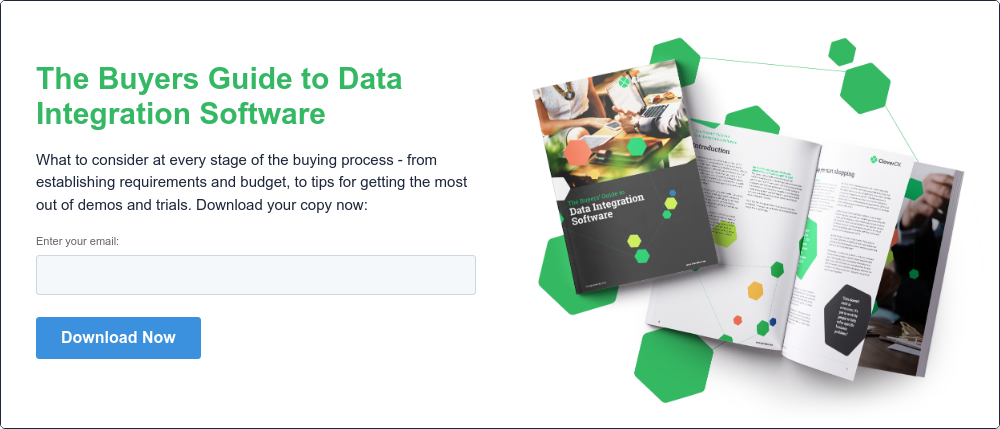Data is the fuel that powers your business. But are you like the 87% of companies who struggle to deliver on their data strategy?
If this sounds familiar to you, it’s time to rearchitect.
Let’s take a deeper dive into the characteristics that make up modern data architectures (MDA) and how they drive innovation.
What characteristics make up a modern data architecture?
MDA hasn’t changed the way we work. It simply streamlines how we design and manage data infrastructures.
These are the characteristics that set MDA apart from legacy systems. It provides you with the tools to take your business further:
1. Scalability
Traditional data architectures don’t have the capacity to deal with this ever-increasing volume. So, to drive innovation, your data architecture needs to scale up.
Watch the webinar this post is based on
Watch the full video below to dive deeper into the 5 characteristics of modern data architecture:
Virtualization—in which you create a simulated computer environment—brought up the level of convenience and elasticity for organizations, when compared to their old static hardware resources. This allowed for performance scaling, as well as management of instances, servers, nodes and containers. The benefits of this are:
- Convenience. You can customize your virtual environment to match the needs of your business—whether that’s adjusting your virtual computing machines, containers or serverless architecture. If you need more power in one place, you can move more resources over without delay.
- Speed. You can upgrade your servers without waiting. Cloud platforms run at high speeds, and you can configure the architecture to keep up with unexpected spikes in demand.
- Recovery. Using the cloud means you won’t have to rely on secondary data centers. The benefit here is disaster recovery. With all your data securely in one place, if something goes wrong, you can get back up and running quickly.
Scalability is key to modern data architecture - it allows you to adapt when your business demands change. As data volumes continue to grow, modern data architecture is there to meet the challenge.
2. Automation
With scalability comes new maintenance and management challenges.
Luckily, MDA and automation go hand-in-hand.
The volume of data you need to handle is too much for a hands-on approach. Automating tasks allows your databases to act for themselves. Common MDA automation use cases include:
- Structuring your data
- Identifying and fixing errors
- Creating reports
A tool like CloverDX can turn your repetitive tasks into reusable templates. From there, you can build highly-configurable frameworks to manage these repetitive processes.
The DataOps ideology is an important factor here. In Gartner’s words, DataOps is:
“…a collaborative data management practice focused on improving the communication, integration and automation of data flows between data managers and data consumers across an organization.”
DataOps has four key pillars:
- Continuous integration
- Orchestration
- Testing
- Monitoring
These pillars help your organization develop data pipelines across cloud environments. If used well, DataOps provides great benefits and growth for your organization.

3. Cost savings
Bulky on-premises systems present many upfront costs that your organization has to face to get underway. Moving to a cloud platform on the other hand seems like a big investment initially. But that’s exactly what it is: an investment. The potential returns are huge.
MDAs streamline your costs and eliminate unnecessary fees. The cloud minimizes your hardware costs. And, with the flexible plans offered by major providers, you only pay for what you need.
What is FinOps and how can it help your cloud cost management?Those aren’t the only savings you’ll make, however. You’ll also benefit from:
- Lower energy costs
- Lower maintenance costs
- No disaster recovery expenses
All of this keeps your business running smoothly without breaking the bank.
But it’s also worth noting that moving over to the cloud doesn’t guarantee cost savings. Static, permanent business processes and storage can actually be less expensive on-premise.
It’s about the use-cases. The cloud opens up the possibility of evolution and the ability to adapt to unpredictable needs. Cost savings lie in this flexibility, as it saves you from having to purchase all new hardware to meet changing requirements.
4. Data quality
We’ll never stop talking about the importance of data quality. And there’s a good reason why. The average financial impact of poor data quality on organizations is $9.7 million per year, according to Gartner.
Successful modern data architectures uphold the dimensions of data quality and regularly check for inaccuracies, anomalies or inconsistencies.
The cloud allows you to automate a lot of this process, so it’s best to enforce data quality from day one. That way you know that all the data you’re feeding in is valid and of a high quality.
5. Simplicity
In the end, the simplest architecture is the best architecture.
Don’t push beyond your means if you don’t need to. The cloud isn’t black and white—it isn’t guaranteed to boost your profits and growth. For many companies, it might not even be the right option at all. You need to use it wisely and align it with your requirements. That way, you’ll gain the most value out of your new architecture.
Architect at a steady pace
Spending on infrastructure for cloud deployments increased 17.2 percent year on year in the first quarter of 2022. But, that doesn’t mean you need to write a check immediately.
Successful modern data architecture projects should take time.
So if you want to take advantage of the latest tech for your data architecture, work out a design that suits your requirements. Plan within your means, and you’ll see the potential of what your data can do.
By CloverDX
CloverDX is a comprehensive data integration platform that enables organizations to build robust, engineering-led, ETL pipelines, automate data workflows, and manage enterprise data operations.








